
Manhole Alternatives for Large Diameter Sewers
The world of sanitary and storm sewers has seen a growing need for larger diameters to carry water. As pipe sizes increase, designing manway access becomes more challenging as larger pipes necessitate larger manholes or concrete boxes. It's not uncommon to resort to cast-in-place structures as the primary solution, which can be both time-consuming and expensive. However, with ongoing technological advancements and the increased use of thermoplastic pipe materials, alternative manhole solutions have been steadily gaining popularity. Many designers and regulators are recognizing the benefits of exploring alternatives to the traditional standard concrete manhole or box structures.
Contech's Steel Reinforced Polyethylene (SRPE) system stands out for its remarkable versatility, offering a range of manway access options. In our assessment of various manway access methods, we've identified four distinct options, which we'll classify as follows: 1. "As Designed," 2. "Riser," 3. "Dog House," and 4. "Tee Based." Let's delve into each approach, accompanied by specific structure examples:
- "As Designed": This approach is most suitable for structures where a standard manhole with a booted connection is employed. The SRPE pipe incorporates a solid wall PE adapter to establish a secure connection between the manhole/boot and the SRPE interceptor. You can find an example of this configuration below.
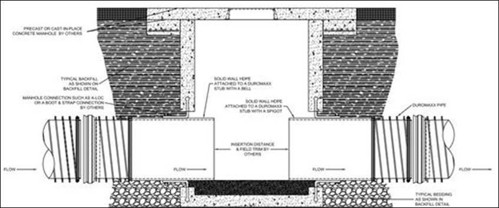
As Designed Manhole - "Riser": When dealing with structures featuring minimal cover height, no incoming laterals, and no changes in grade, slope, or direction, the "Riser" method is the best option. The riser extends directly from the crown of the SRPE pipe, with the option to include a ladder. The contractor then takes care of the final grade using an independent ring and cover, as showcased below:
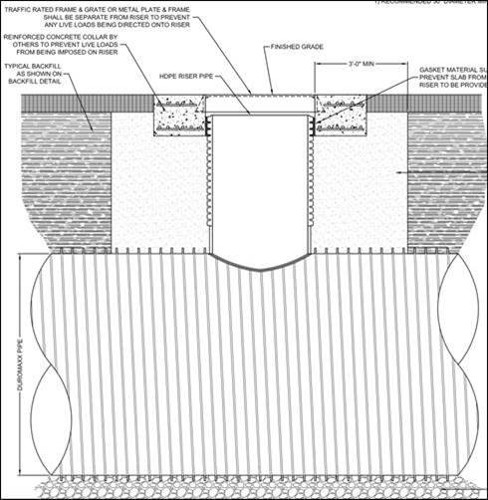
Riser Manhole - "Dog House": In situations where deeper covers are present, with potential laterals entering at higher elevations than the mainline but without changes in slope and direction, the "Dog House" method is applicable. The image shown below is a notable example of where this approach shines. Here, the SRPE passes through the manhole's in/out knockouts within a doghouse-style manhole base. This design allows for the placement of standard rings up to grade and enables the contractor to core holes above for incoming laterals. Access is granted by cutting off the top of the SRPE or providing a large stub. The SRPE is grouted into the manhole up to approximately the springline and around the pipe, ensuring a continuous invert without leakage concerns. This method was successfully utilized in Contech's involvement in a 12-mile project for a sanitary trunkline in Idaho in 2010.
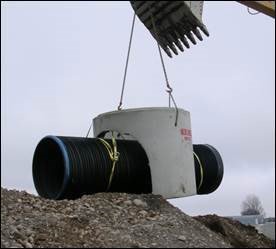
- "Tee Based": This method closely mirrors the practices of some Fiber Reinforced Plastic (FRP) suppliers. The SRPE pipe is supplied with an access stub in the crown of the pipe. In this configuration, the pipe is encased in concrete to create a stable base for the manhole rings. This method is chosen in sections where incoming taps occur below the mainline's crown elevation and incoming laterals are positioned above. The contractor performs an in-situ tap on the SRPE pipe and then pours the base just above the crown. Structure 113 provides a clear example of this approach, as displayed below:
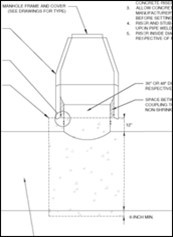
Below are a few more visual examples of access types.
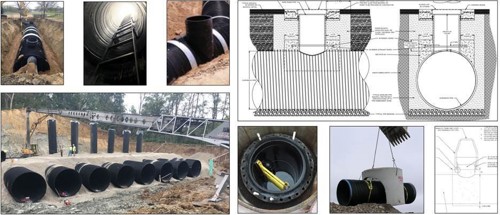
In conclusion, Contech's SRPE system offers a comprehensive range of manway access solutions tailored to various project requirements. The versatility of these four methods, namely "As Designed," "Riser," "Dog House," and "Tee Based," ensures that cost-effective and efficient solutions are readily available for a wide array of project scenarios. This adaptability, supported by successful implementation examples, underscores the value of Contech's innovative solutions in the field of infrastructure development.
